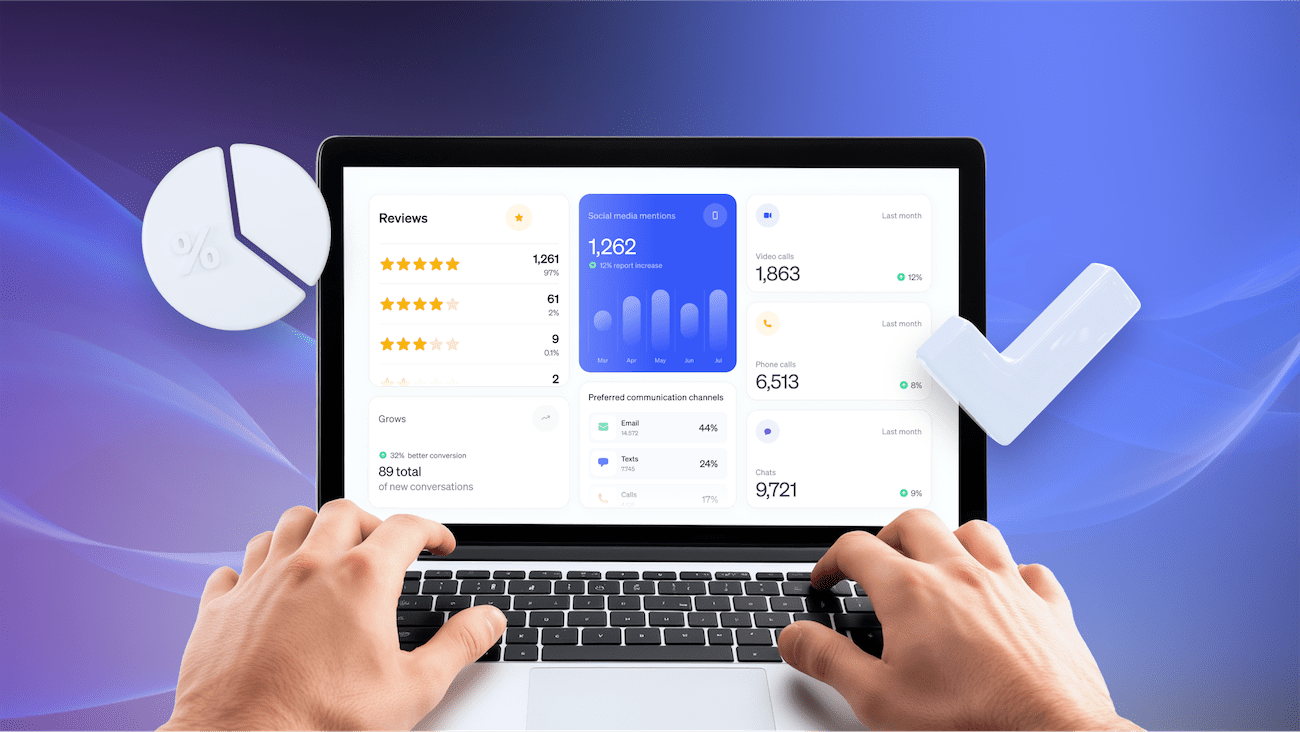Striking the perfect balance between labor costs and service quality is one of the biggest challenges in workforce management (WFM). According to Gartner, inefficient scheduling can increase labor costs by up to 20%, while poor staffing results in longer wait times and lower customer satisfaction.
The solution? Data-driven automation that aligns staffing with demand, without burning out your team. Nextiva Workforce Scheduling helps businesses optimize agent schedules, reduce overhead, and maintain consistent service levels—even during unpredictable call volume spikes.
The best WFM tools don’t just automate scheduling by empowering employees with predictable, fair shifts; they also ensure businesses meet customer expectations.
Introducing Nextiva Workforce Scheduling
Part of Nextiva’s Workforce Engagement Management (WEM) suite, this solution uses AI-powered forecasting to analyze historical trends, agent availability, and real-time demand. The result? Schedules that reduce overstaffing, prevent understaffing, and help teams hit Service Level Agreements (SLAs) efficiently.

The Problems Nextiva Workforce Scheduling Solves
Control staffing costs
Rising labor expenses are a common challenge for contact centers. Overstaffing increases operational costs, while understaffing results in long hold times and subpar customer experiences. In fact, ineffective staffing can increase costs by as much as 20% for a typical call center (Sequence Health), and understaffing can lead to call abandonment rates that further damage revenue and customer retention. Not to mention, absenteeism is quite common in call centers.
Nextiva Workforce Scheduler utilizes historical data to accurately forecast the exact number of agents required at any given time, thereby preventing costly inefficiencies. Accurately predicting staffing needs ensures that contact centers operate efficiently, enhancing customer service and minimizing unnecessary costs.
Enhance customer service
Long wait times are an everyday customer frustration. According to industry standards, around 80% of callers are likely to abandon a call if they are forced to wait on hold for more than 2 minutes (SQM Group).
Nextiva Workforce Scheduling ensures that your team is adequately staffed for anticipated fluctuations in call volumes, helping you exceed customer expectations and deliver Amazing Service.
Enable flexibility for agents
Extended work hours for agents can lead to burnout and decreased performance, which in turn fuels a cycle of turnover. The costs of turnover are extremely high. It’s estimated that losing an employee can cost a company one-half to two times the employee’s salary (Gallup).
Nextiva Workforce Scheduling ensures agents handle a manageable number of calls, get adequate breaks, and have flexible schedules. This not only reduces burnout but also leads to higher productivity and retention.
Notable Workforce Engagement Management Use Cases
Effective workforce management is the key to the difference between a well-oiled machine and a chaotic operation marked by staffing shortages, wasted labor costs, and frustrated customers. Let’s look at how different industries benefit from modern WFM solutions through real-life scenarios.
At Nextiva, we serve companies of all sizes across various industries, enhancing workforce management through our Workforce Scheduling solution.
Here are several practical use cases for prioritizing workforce engagement management in your contact center operations.
Retail Call Centers: Predicting Demand Before It Happens
Imagine a national retailer preparing for Black Friday. Last year, they experienced an unexpected call volume spike, resulting in 10-minute wait times and abandoned calls.
With WFM forecasting tools, the operations manager examines three years of historical data to predict this year’s peak periods. The system recommends optimal staffing levels, allowing the team to schedule temporary staff exactly when needed. Real-time monitoring detects an unusual surge in technical support calls, and the supervisor can temporarily reassign agents from the returns department to maintain service levels.
Healthcare Contact Centers: Managing Coverage During Crises
A large hospital’s patient support center handles 2,500 calls a day. When flu season hits, volume jumps to 4,000 calls.
Traditional scheduling methods would leave them understaffed, but WFM software takes into account seasonal trends when creating schedules months in advance. When three agents call out sick on a critical day, the system instantly identifies qualified part-time staff and sends shift pickup notifications. Meanwhile, adherence monitoring alerts the supervisor when call handle times exceed the target, enabling them to provide real-time coaching.
Financial Services: Managing Cyclical Demand Peaks
A mid-sized credit union sees a 40% call volume increase in the first week of every month when mortgage payments are due. Their old scheduling system couldn’t adapt, so they had to choose between overtime costs or poor service levels. With effective workforce engagement solutions, the system now:
- Adjusts the baseline schedule to account for the monthly peaks
- Integrates with their HR system to avoid scheduling trainees during high-volume periods
- Provides real-time dashboards to show which queues need attention
The result? A noteworthy 22% reduction in overtime costs while maintaining their 80/20 service level (80% of calls answered in 20 seconds).
The Operational Impact of Intelligent Scheduling
These examples illustrate a common theme: businesses utilizing WFM tools transition from reactive staffing to predictive workforce optimization. The best solutions don’t just automate existing processes – they provide actionable insights that help managers:
- Balance service levels with labor costs
- Improve employee satisfaction through fair and predictable scheduling
- Respond to demand fluctuations in real time
“Once we stopped guessing and started letting the data drive our schedules we saw immediate improvements in our numbers and team morale,” said a contact center director at a Fortune 500 retailer. That’s the magic of WFM.
Core Capabilities to Enhance Your Workforce Management
- Intraday management: Monitor agent performance and adjust in real-time to enhance operational efficiency.
- Schedule adherence: Ensure agents follow schedules to reduce downtime and improve productivity.
- Forecasting and planning tools: Predict future staffing needs based on historical trends, ensuring you’re always prepared for busy periods.
- Scheduling and shift bidding: Enable agents to bid on their preferred shifts, increasing flexibility while maintaining optimal staffing levels.
- Time-off management: Handle time-off requests efficiently to maintain adequate staffing levels while minimizing disruptions to service.
- Mobile app: Allow agents to manage their shifts and schedules from anywhere using their mobile devices, providing flexibility and convenience.
- Agent and supervisor portals: Provide agents and supervisors with access to schedules, performance metrics, and management tools, improving communication and transparency.
- Reporting and dashboards: Gain insights into performance metrics and trends to inform better decision-making and optimize staffing strategies.
By combining these capabilities, Nextiva Workforce Scheduling enables organizations across diverse sectors to optimize staffing, enhance operational efficiency, and effectively manage workforce demands in real-time and for future planning.
Ready to See Workforce Scheduling in Action?
Explore the interactive Nextiva Workforce Scheduling demo, where you can witness firsthand how it helps businesses stay ahead of customer demand and staffing needs.
Visit the Nextiva Workforce Scheduling product page for more details.

















 Productivity
Productivity 










